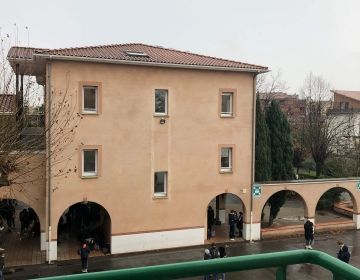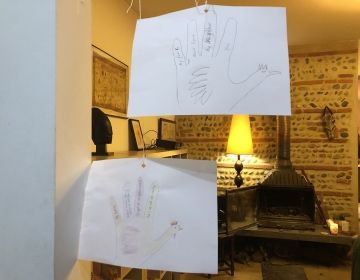The French School System
Moving to a new country can be incredibly daunting; add getting used to a new school system on top of that, and study abroad can seem overwhelming. Before I left, I always looked at CIEE blogs to try to figure out what my life in France would be like, and now that I’m here, I feel I owe it to future generations of study abroad students to answer the questions that I obsessed over. I decided to write a short guide to French high school from an American’s perspective to both ease some of those doubts and to show people what life here is like, whether they’re a perspective exchange student or not.
Having a “Class”
Unlike in the US, French people have all their classes with one group of people, who they call their class. While they move to different classrooms with different teachers, the other students almost always stay the same (except for electives and smaller-group lessons) . This makes making friends a lot faster and simpler, but it can also be tough if you don’t like your class’s dynamic.
Schedule
French students have different classes in a different order based on the day of the week. This also means that different days of the week can have different start and end times. I’m lucky enough to start at 10 and 11 some days, but not everyone is! Classes are usually 1 hour, but can occasionally be 1.5 or 2 hours. It’s normal to have long breaks aside from lunchtime in your day when you don’t have a class. If a teacher is absent, you’ll simply have a free period instead of having a substitute teacher. Most of the time, you’re allowed to go off campus during your breaks, as long as you have your school ID with you. However, since you have long breaks, school end times are later; usually around 5 or 6pm.
Class Style & Content
I’m in seconde, the first year of French high school, so I take a range of subjects. The system for the last two years is in the middle of changing, but it’s essentially more specialized on a few subjects of choice. Most classes are similar to the US, except that science is divided into biology and physics/chemistry, and you’ll also be taking a civics class and an economics and social studies class. French students take English and another foreign language, but you can ask CIEE to excuse you from the second foreign language if it’s too overwhelming. Classes consist mostly of taking notes and, in science and math classes, doing exercises or experiments. Participation and homework points don’t really exist; your grade is based off tests and the occasional take-home assignment. The homework load is a bit lighter than the US, but you’ll need to spend more time studying for tests. Even though the homework isn't graded, the teachers will still do occasional checks, so it's better to do it (and get the extra practice!).
Grading
From my experience, study abroad students tend to be overachievers, so the harshness of the French grading system is a challenge at first. However, don’t stress when you get a 13/20! While this is a 65 (failing) in US grades, it’s actually normal in French school. Teachers don’t give partial credit and take points off for smaller errors than in the US. Everything is graded out of 20. To get an 18-20, you have to really go above and beyond. 13 is considered quite average, while scores under 10 are ranging into failing territory. While you might be used to perfect scores in your home country, they’re unattainable here, especially for exchange students. Expect to start the year rough and end up getting 13’s.
Expectations for Foreign Students
While foreign students aren’t given a free pass for everything they do, they also aren’t expected to perform on the same level as their French peers. Teachers understand if you don’t understand assignments, so don’t put pressure on yourself to do everything perfectly! On written compositions, you will often receive a more lenient, effort-based grade.
Supplies
Don’t worry about bringing school supplies from home! It’s easier to buy them in-country, plus the notebooks are differently ruled. French students almost exclusively use pen (the multi color push-down ones are their favorite), so they use white-out tape called Blanco or Tippex, which is very easy to find. You’ll also need a multi-pocket folder for worksheets, a notebook for each class, a glue stick, scissors, and an agenda book to write homework.
I hope this answers some questions! School abroad seems daunting, but people generally recognize that you’re not used to the system and you’ll make mistakes. Within a few weeks, it’ll feel as natural as school in the US.
Related Posts

Goodbye letter to my class
Last week was my last week of school so I wrote a letter to my class saying goodbye and thank you. This is the version I wrote in French and... keep reading

Celebrating Holidays While Studying Abroad
Thanksgiving was last week, and I wanted to share what it was like for me in France. Since Thanksgiving isn’t a holiday in France I had school, but I celebrated... keep reading

What It's Like Studying Abroad During a Pandemic
I applied to study abroad in France last fall before the coronavirus pandemic. It definitely changed some things and so I wanted to share about my experience being in another... keep reading